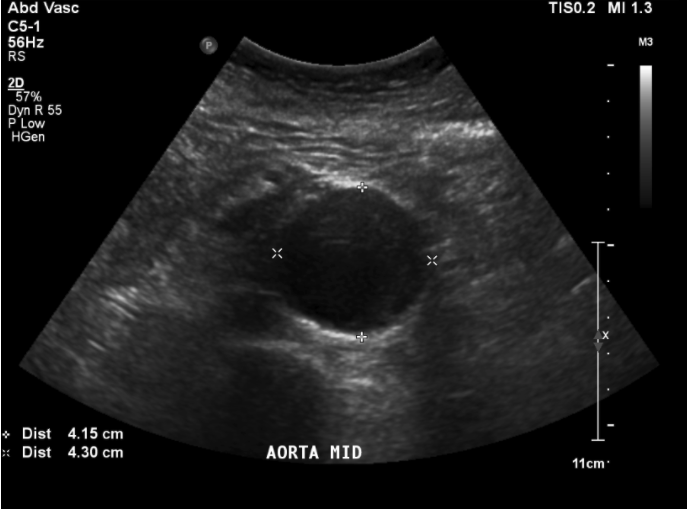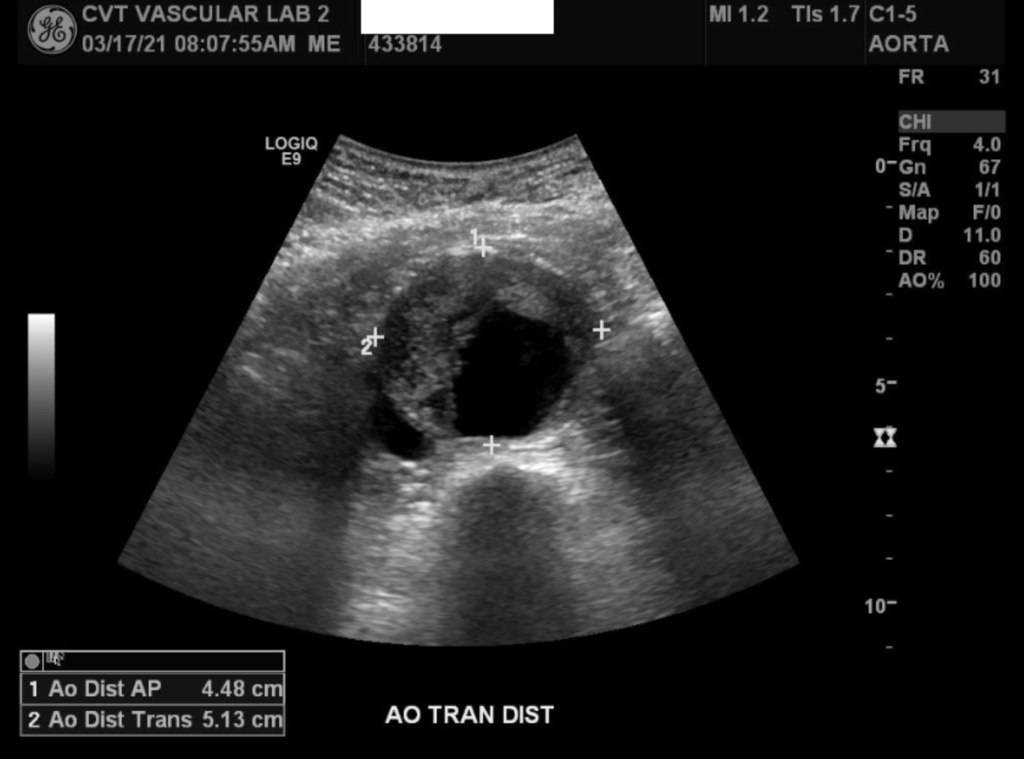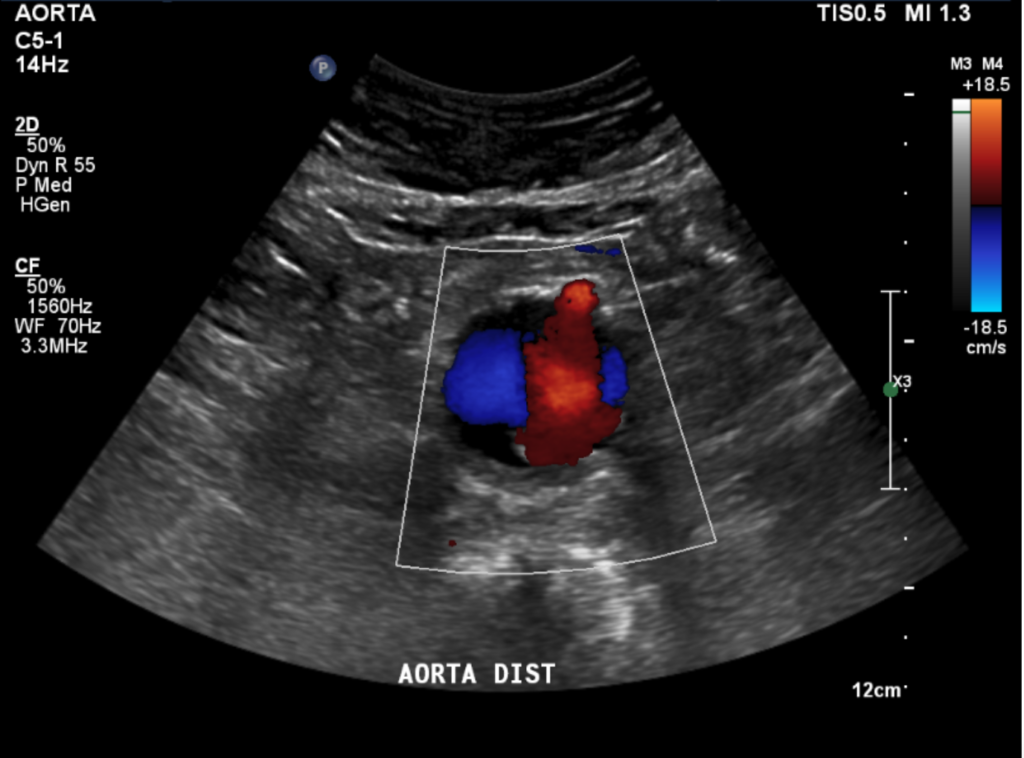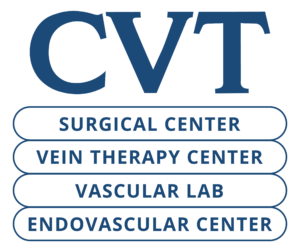The aorta is the main artery that runs through the abdomen.
This vessel can develop an aneurysm (dilatation) which can grow to the point of rupture. The most common site for aneurysm development is below the kidneys (renal arteries). An ultrasound of the aorta provides a safe and accurate measurement of the aortic size.

Symptoms of AAA include:
- Abdominal pain
- Back pain
- Pulsatile mass in the abdomen
The aorta in the abdomen normally measures two centimeters or less in diameter. An aneurysm is present when the aorta is dilated to three centimeters. There is low risk of rupture until the aneurysm grows beyond this size.
Evaluation by a vascular surgeon is recommended if the aorta measures three centimeters or more. Repair is typically not considered until the aneurysm is at least five centimeters.
Risk factors for abdominal aortic aneurysm include:
- Smoking
- High blood pressure
- Family History of
- Age over 60 years
Length of exam: 45-60 minutes
Preparation: Do not eat, drink, or smoke for 8 hours prior to the exam. Avoid caffeine and tobacco products prior to exam.
Examples of an AAA






